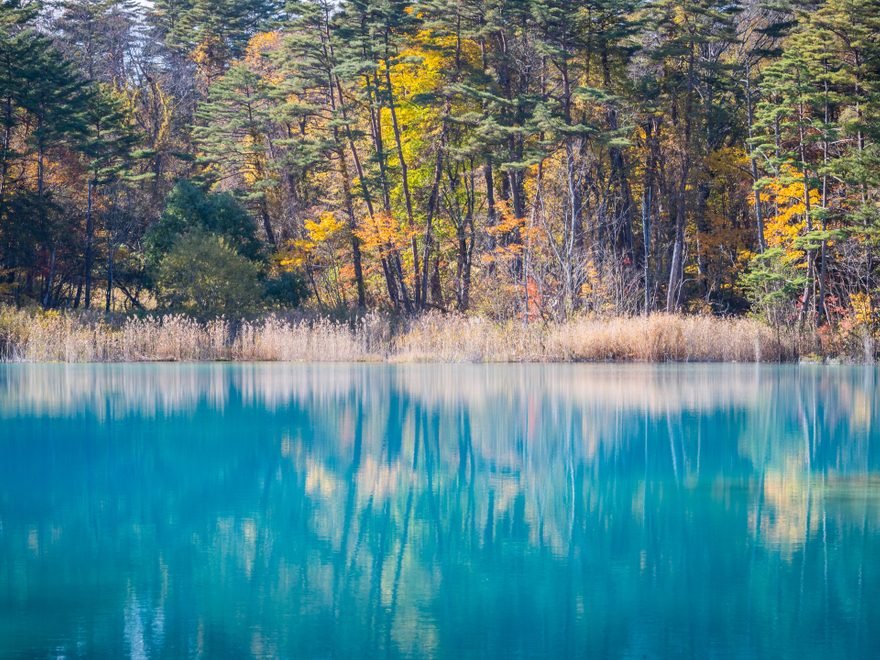Hokkaido Region
Rishiri-Rebun-Sarobetsu National Park
The northernmost national park in Japan boasts vast fields of alpine flowers and 40-kilometer sand dunes along the coastline. Mount Rishiri — also known as Mount Rishiri Fuji because of its cone-shaped peak — has two hiking trails to the top, perfect for getting ocean views as well as views over alpine flower fields.
The park’s numerous swamps are temporary homes for multitudes of migratory birds in spring and autumn, and Sarobetsu Wetland Center allows visitors to view them up close in all weathers without disturbing them. Horonobe also has a similar facility as well as a great view of Mount Rishiri. Both areas have extensive wooden pathways for exploration across the marshes.
Activities: Hiking, mountain climbing, bird watching
More info: Rishiri-Rebun-Sarobetsu National Park
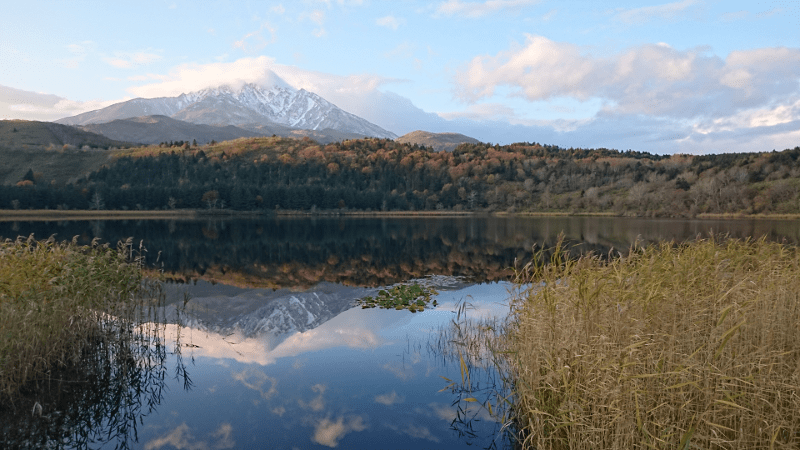
Shiretoko National Park
This long and narrow peninsula in Hokkaido features steep volcanic mountains, deep virgin forests, and in winter, drift ice that floats over from the mouth of River Amur in Russia. The Shiretoko Five Lakes are surrounded by dense forests and have a rich variety in wildlife, including animals such as the Ezo shika deer, spotted seals, Steller’s sea eagle, the endangered Blakiston’s fish owl, and many more. You’ll also find several hundred bears roaming the area, as Shiretoko (which means “the end of the Earth” in Ainu) is home to one of the densest brown bear populations in the world. From the shore – or ideally from a boat – you can spot killer whales, sperm whales, and sea lions.
Activities: Ice drift walking, drift ice cruises, whale watching, mountain climbing, hiking, onsen bathing
More info: Shiretoko National Park
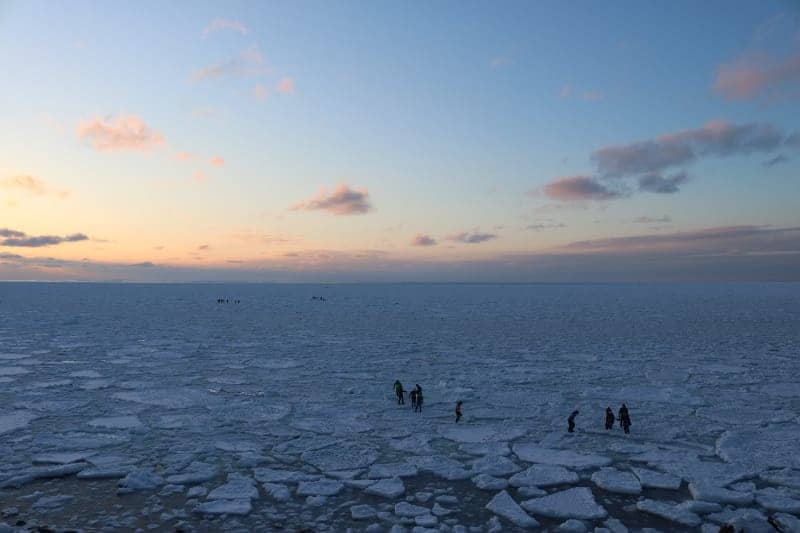
Akan-Mashu National Park
Akan-Mashu National Park has three caldera landforms — the Akan Caldera, the Kussharo Caldera (featuring Japan’s largest caldera lake), and the Mashu Caldera — all formed by the Chishima volcanic zone. Lake Akan, located on the western side of Akan Caldera, is a prime habitat for one of Hokkaido’s most famous vegetations — the green marimo ball, which is a spherical freshwater algae. The Lake Akan Onsen district is also home to the largest Ainu settlement in Hokkaido, which has about 30 households. Traditional Ainu dance performances are held at the Lake Akan Ainu Theater Ikoro, celebrating the rich Ainu culture.
A recent addition to the park, Kaminoko Pond (pictured below), is located at the foot of Mashu Caldera’s north side. It gained entry in August 2017, and is a popular photo spot due to its clear, blue-tinged water that almost seems to glow when the sun shines through.
Activities: Canoe tours, onsen bathing, discovering Ainu culture
More info: Akan-Mashu National Park
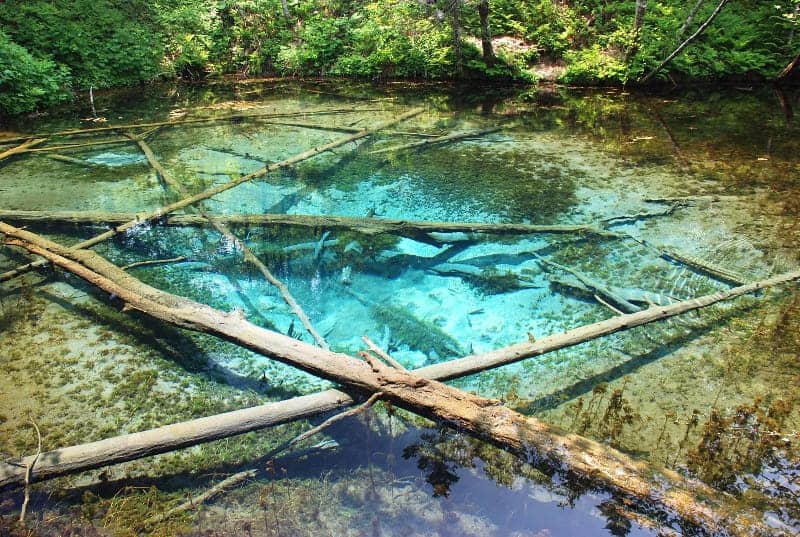
Kushiroshitsugen National Park
Kushiro Marsh is Japan’s largest marsh and while that may not sound too exciting, it has an impressive biodiversity thanks to the area suffering minimal human interference. Here you’ll find rare species like the white-tailed sea eagle, the Japanese huchen (Japan’s largest freshwater fish) and the red-crowned crane — a bird previously thought to be extinct. The Onnenai Wooden Path is the only boardwalk built here, allowing visitors to enjoy this rich natural scenery with seasonal flowers and a vast array of wild birds up close. Multiple observatories in the park also offer expansive views of the landscape.
Activities: Horse trekking, canoe tours, smelt fishing (ice fishing), riding slow steam trains to enjoy the view
More info: Kushiroshitsugen National Park
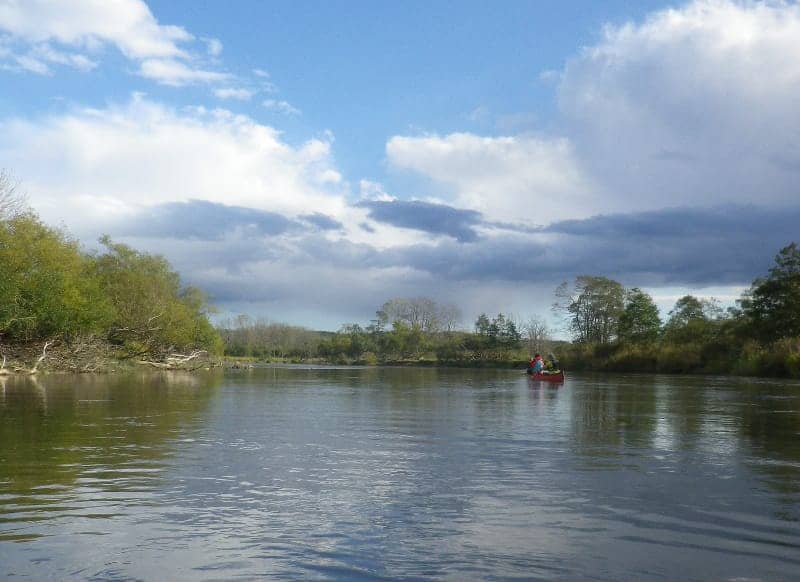
Daisetsuzan National Park
Sometimes referred to as the roof of Hokkaido, the Mount Daisetsu volcanic group has many active volcanos and includes Mount Asahidake, which is Hokkaido’s highest peak at 2,291 meters above sea level. The area is popular among mountain climbers for its variety of challenging climbs and breathtaking views. Hikers can rest at one of the many hot spring resorts in the area: Sounkyo Onsen — the largest hot spring area in northern Hokkaido — as well as nearby Daisetsu Kogen Onsen, and Nukabira Gensenkyo.
The Ainu people refer to the area as Kamui Mintara, which means “the playground of the gods,” and is host to rare animal species such as the Japanese pika (often referred to as a living fossil), the Siberian ruby throat, the Ezo red fox, and more.
Activities: Mountain climbing, onsen bathing, hiking
More info: Daisetsuzan National Park
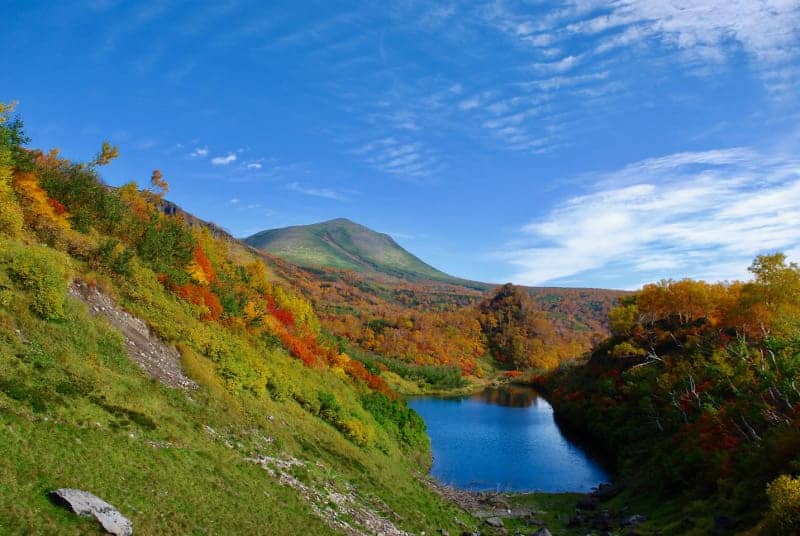
Shikotsu-Toya National Park
Shikotsu-Toya National Park, often referred to as a “living volcano museum,” is split into three main areas and features several active volcanoes. The Jigokudani area (hell valley) offers close-up views of gasses and volcanic waters spewing from the earth, and the recently created Konpira crater, formed in 2000 during one of Mount Usuzan’s most recent eruptions, is accessible by surrounding footpaths. Because of the multitude of active volcanoes, coupled with easy access from Sapporo and Shin-Chitose airport, the area has many thriving hot spring resorts.
Activities: Camping, onsen bathing, hiking
More info: Shikotsu-Toya National Park
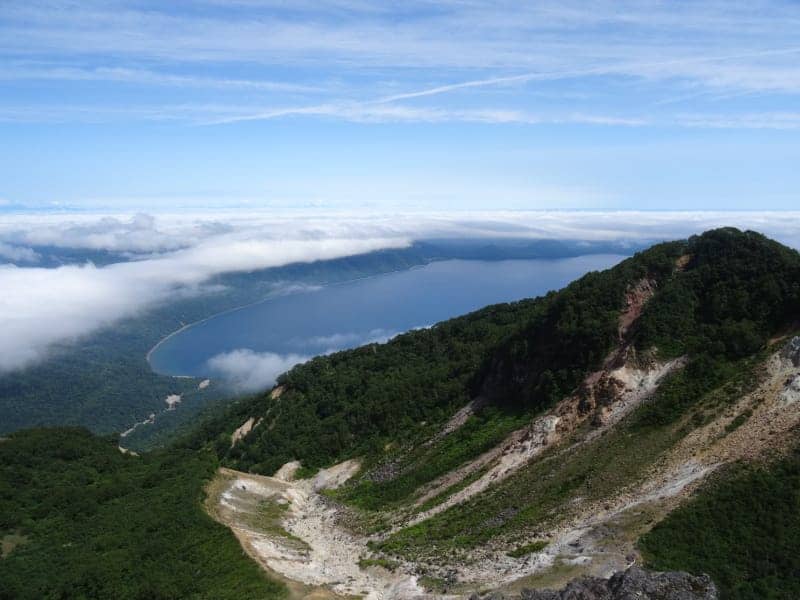
Tohoku Region
Towada-Hachimantai National Park
Found in northern Tohoku, this park stretches across Aomori, Akita and Iwate prefectures. Located in two separate areas, Towada-Hachimantai National Park is a combination of the Towada-Hakkoda and the Hachimantai regions. The Towada-Hakkoda area’s crowning jewel is Lake Towada, Japan’s largest crater lake on Honshu. It was formed about 200,000 years ago and is famous for its deep blue color, beautifully offset by the red leaves in autumn. The Hachimantai region features a 26.7-kilometer snow corridor that is accessible from mid-April, as well as one of the most famous hot spring resorts in Japan, Nyuto Onsen.
Activities: Onsen bathing, hiking, mountain climbing, camping, skiing, guided nature walks, snowshoe walking
More info: Towada-Hachimantai National Park
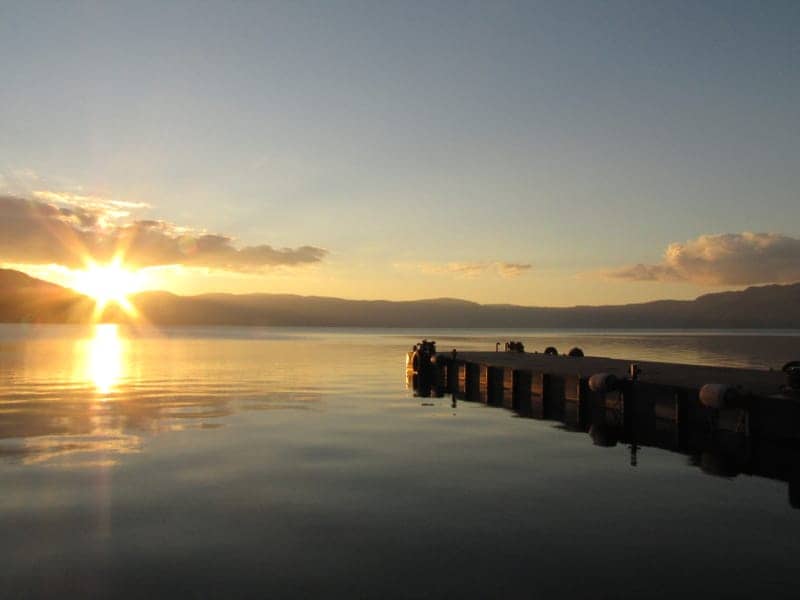
Sanriku Fukko (Reconstruction) National Park
Originally designated as a national park in 1955 as Rikuchukaigan National Park, it was renamed in 2013 as Sanriku Fukko (Reconstruction) National Park to help redevelop the Sanriku region after the devastation of the 2011 Great East Japan Earthquake. The park includes the coastal areas of Aomori, Iwate, and Miyagi prefectures. The northern area is referred to as the “Alps of the Ocean” thanks to its beautiful jutting cliffs facing the sea. The Tanesashi Coast to the north has an amazing mixture of coastal reefs, grass meadows, sandy beaches, and pine forests. Further south, the Kosode Coast is home to Hokugen no Ama, female divers who free-dive for bounties of the sea.
Activities: Trekking along the Michinoku Coastal Trail, riding a sappa boat, fishing using a seine net
More info: Sanrikku Fukko (Reconstruction) National Park
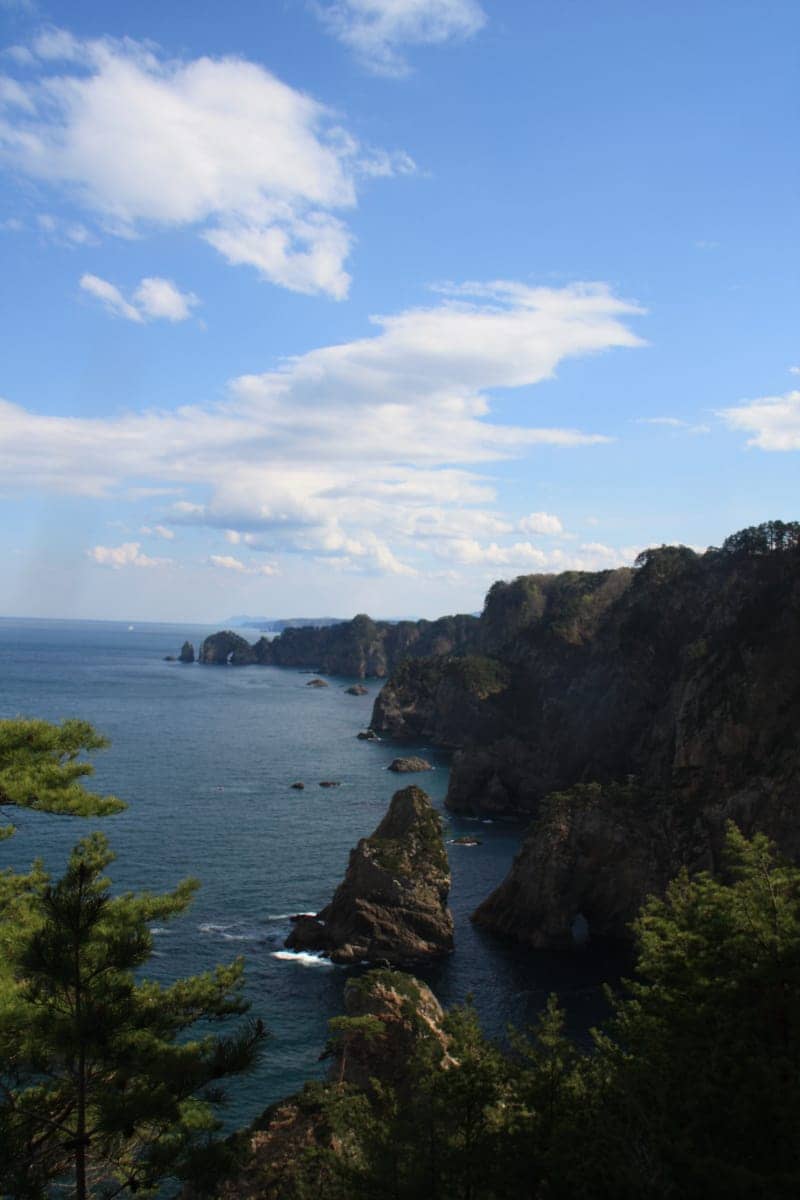
Bandai-Asahi National Park
Dewasanzan, a collection of three mountains — Mount Haguro, Mount Gassan, and Mount Yudono — has been a famous place for mountain worship and related spiritual practices for centuries. The area is scattered with old shrines, temples, and cedar-lined paths that draw ascetics on pilgrimages even today. Goshikinuma Nature Trail is a four-kilometer route around lakes and ponds (see top image), where visitors can see over 10 different marshes, each with its own distinct characteristics and color. A myriad of flowers line the area most seasons, including the rare otome-yuri (maiden lily).
Activities: Skiing, hiking, onsen bathing, mountain climbing, fishing, snowshoe trekking, temple stays
More info: Bandai-Asahi National Park
For more things to do in Tohoku, read our feature “Top Things to Do, Eat and See in Tohoku.”
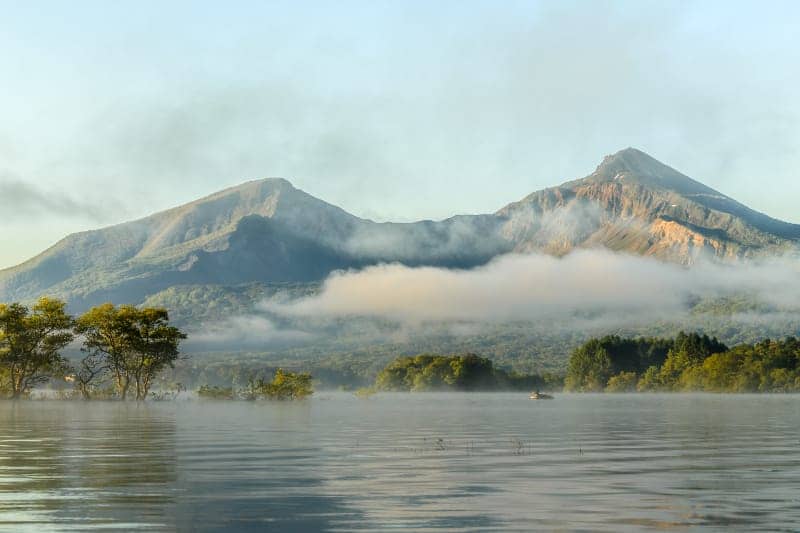
Kanto Region
Nikko National Park
Nikko National Park is one of the first national parks in Japan, opening in 1934. The park area straddles Fukushima, Tochigi, and Gunma prefectures, and is easy to get to from Tokyo. The area is rich in cultural, historical, and natural treasures, including the world-famous Nikko Toshogu Shrine and Rinnoji Temple, but it has much more to offer than first meets the eye. To the northeast, boat rides along Kinugawa River offer stunning views of the surrounding forests and mountains. Further upstream of the river lies Setoaikyo Canyon, a two-kilometer-long valley that is approximately 100 meters deep. To the southwest, the Oku-Nikko High Moor consists of wide expanses of wetlands that can be crossed on wooden pathways in spring, summer, and autumn.
Activities: Skiing, hiking, nature trail tours, snowshoe walking, river rafting, onsen bathing
More info: Nikko National Park
For more things to do in Nikko, read our feature “48 Hours in Nikko.”
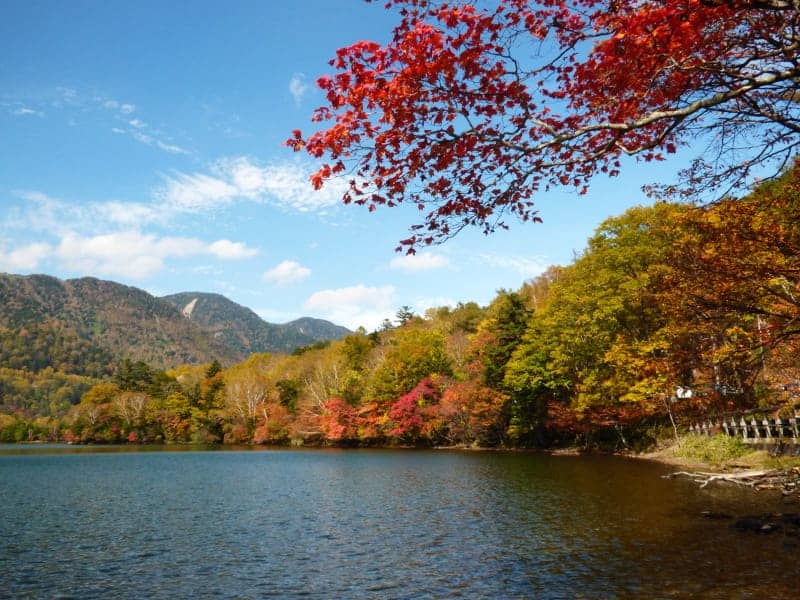
Oze National Park
For serious hikers and nature trail addicts, Oze National Park is a must. It’s home to Japan’s most extensive mountain wetlands, and has wooden paths across areas such as the Ozegahara Plateau and Lake Ozenuma, making it accessible to visitors all year round. Those who want a bit more of a challenge can explore further in, but visitors are advised to come well-prepared for long hikes and give themselves plenty of time to reach their destinations as the trails can be more arduous than they initially seem. There are camping grounds, lodges and visitors centers scattered across the area offering a place to stay and the latest updates on weather conditions.
Activities: Hiking, mountain climbing, camping
More info: Oze National Park

Chichibu-Tama-Kai National Park
Home to mountain worship regions Mount Mitake and Mount Mitsumine, this region has many historic shrines and temples. Those who want to stay longer to soak up the spiritual atmosphere can stay at a temple lodge here. To commune more directly with nature, the mountain ridge route of Daibotsu Pass offers views of both Mount Fuji and the Minami Alps. For the adventurer, The Metropolitan Nature Trails (Kanto Fureai no Michi in Japanese) consists of four courses that guide hikers through seven prefectures (Tokyo, Saitama, Gunma, Tochigi, Ibaraki, Chiba, and Kanagawa). The beauty of this particular route is that it covers not only extensive natural environments but also areas of historical and cultural value.
Activities: Hiking, mountain climbing, camping, fishing, river trekking
More info: Chichibu-Tama-Kai National Park
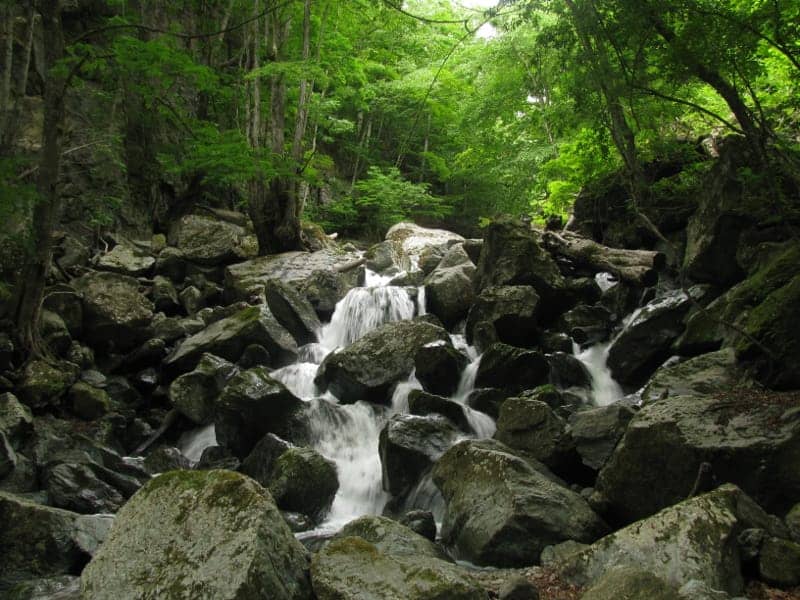
Ogasawara National Park
A treasure trove of natural wonders, Ogasawara National Park consists of a group of stunning subtropical islands about 1,000 kilometers south of Tokyo, a region the park technically belongs to. The islands have evolved a unique ecosystem with flora and fauna not found on Honshu, as they’ve never been connected with the mainland of Japan. The people here have worked hard to preserve and protect this rare natural landscape and have invested heavily in sustainable eco-tourism. Because of the mountainous terrain, there are plenty of high viewpoints to take in the surrounding beauty.
Activities: Snorkeling, scuba diving, whale and dolphin watching,
More info: Ogasawara National Park
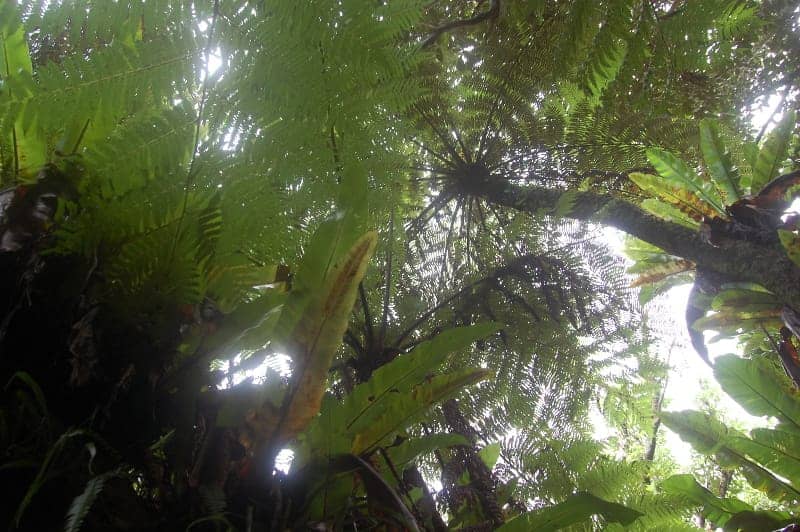
Fuji-Hakone-Izu National Park
This park covers three quite different regions: Mount Fuji, Hakone, and the Izu Islands. Mount Fuji takes up the northernmost end of the park, with volcanic landforms, lakes, and Aokigahara-Jukai Forest. While the forest has unfortunately gained a bad reputation as Japan’s “Suicide Forest” in recent years, there are easy walking trails here, as well as some unique sights, such as the Fugaku Wind Cave and the Narusawa Ice Cave. Hakone has many volcano-related attractions including Owakudani Valley, where volcanic gases rise up from the earth. It also offers fantastic views of Mount Fuji and Lake Ashinoko. Both the Izu Peninsula and Izu Islands have beautiful beaches, and the islands have a fantastic array of natural outdoor onsen — some are free to enter, but require bathing suits as the hot springs are open to everyone.
Activities: Scuba diving, swimming with dolphins, hiking
More info: Fuji-Hakone-Izu National Park
To book a Mt Fuji and Hakone tour, see our Concierge listing.
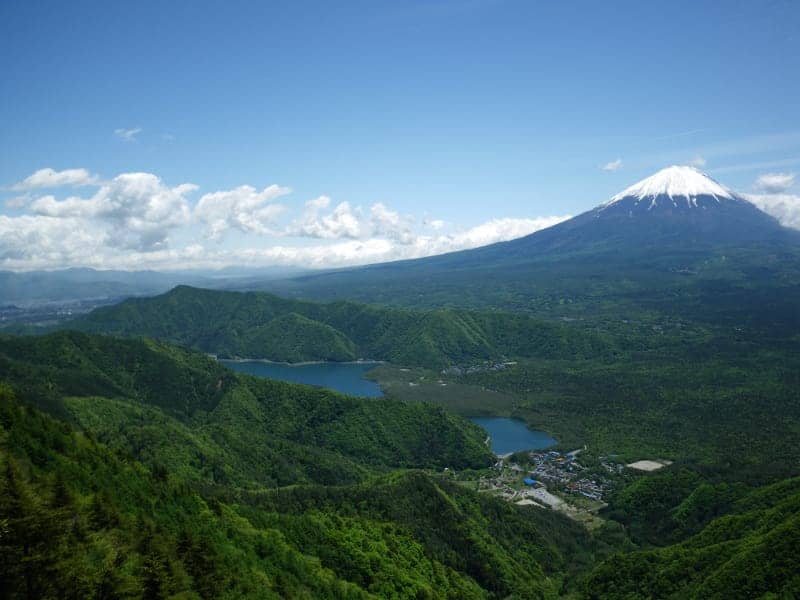
Minami Alps National Park
While most people know that Mount Fuji is Japan’s tallest mountain (3,776 meters), most will draw a blank when asked about Japan’s second tallest mountain. You’ll find it here in Minami Alps National Park: Mount Kitadake (3,193 meters) along with more than 10 other mountain peaks reaching over 3,000 meters. In fact, the Minami Alps are still growing at a pace of about three to four millimeters a year — so maybe, one day in the distant future, Kitadake will surpass Mount Fuji to become Japan’s tallest mountain.
The area is also known for its spiritual powers – Mt. Jizogatake, for one, is believed to help couples with fertility issues. As with Sannomiya Shrine in Nikko, couples come here to borrow a Jizo statue to take home. Once their prayers to have a baby have been answered, they return with two Jizo statues — one borrowed, and one new, to give other couples hope.
Activities: Mountain climbing, hiking, skiing
More info: Minami Alps National Park
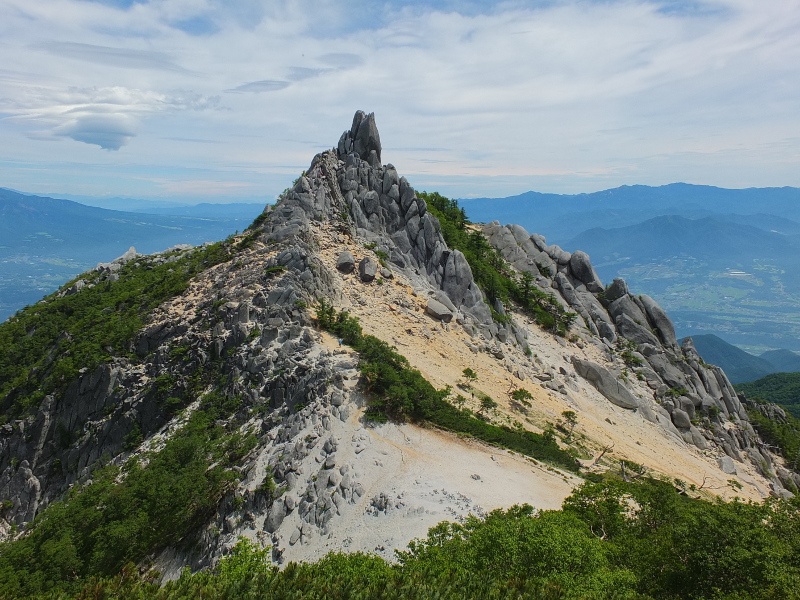
Chubu Region
Joshin’etsukogen National Park
Joshin’etsukogen National Park is home to onsen and those who love them — not all are human. This is where you’ll find the Jigokudani onsen, famed for Japanese snow monkeys bathing in the outdoor hot springs in winter. There are also hot spring resorts for humans here, Kusatsu being the most famous — it’s one of Japan’s top three hot spring destinations. Snow enthusiasts will find plenty to do here, as there are multiple ski resorts with high-quality snow and facilities. If hot water or snow-capped trees aren’t your cups of tea, Yunomaru Highland has an expansive field of flowers that turns a fiery red in late June when 600,000 azalea shrubs come in bloom.
Activities: Skiing, eco tours, onsen bathing, hiking, snowshoe walking
More info: Joshin’etsukogen National Park
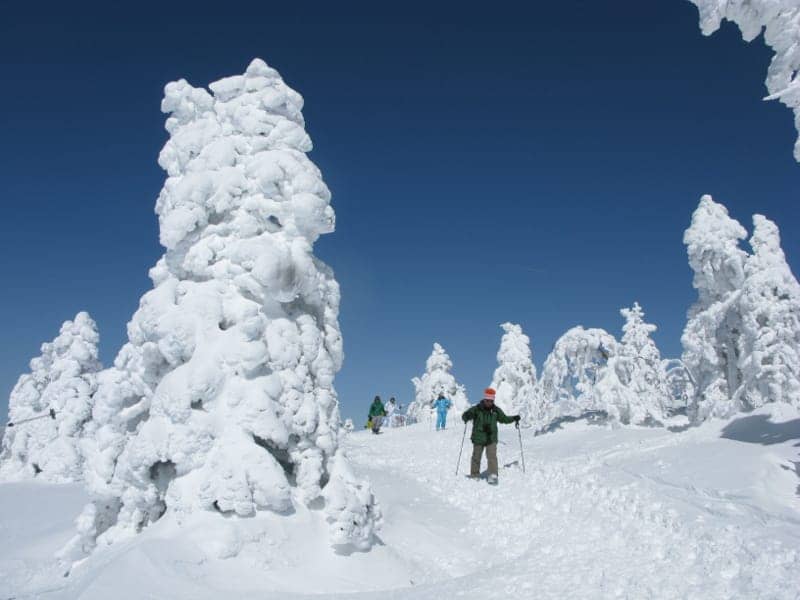
Myoko-Togakushi Renzan National Park
This national park straddles the borders of Niigata and Nagano prefectures. It features a combination of volcanic and non-volcanic mountains, giving the land a mix of geological structures that are rarely seen together in Japan. This may be one of the reasons the region has been important for ascetic practices since ancient times. The many marshes and ponds here, as well as the difference in elevations across the region, help maintain a large biodiversity of flora and fauna. Koyaike moor (pictured below) is located 2,100m above sea level, while Lake Nojiri is home to the unearthed fossils of the Naumann elephant.
Activities: Skiing, hiking, mountain climbing, fishing, water sports
More info: Myoko-Togakushi Renzan National Park
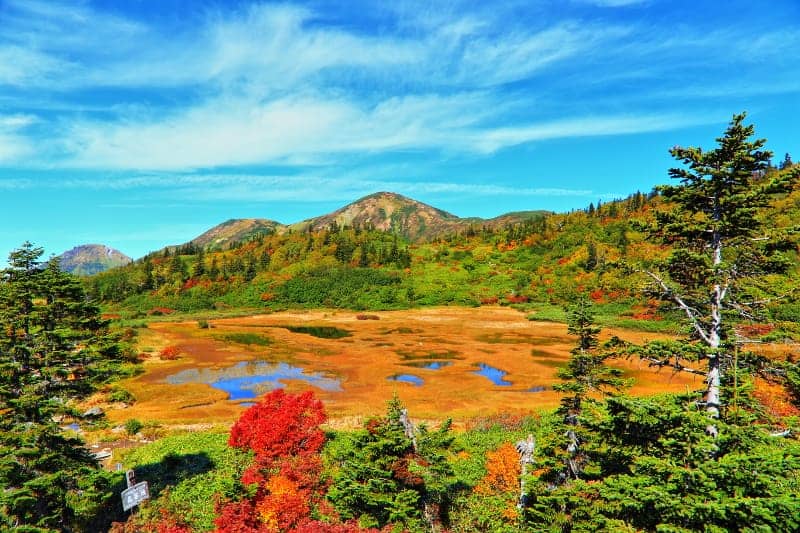
Chubusangaku National Park
Opened in 1934, Chubusangaku National Park is one of the first national parks in Japan, along with Nikko and a select few others. It covers Niigata, Toyama, Nagano, and Gifu prefectures, and is easily accessible from each of these areas, making it a popular hiking and mountain climbing destination. Kurobe Gorge is especially famous, most notably for its sharp v-shaped inclines. The gorge separates two mountain ranges: Tateyama and Ushiro-Tateyama. Tateyama is one of Japan’s three sacred mountains, along with Mount Fuji and Hakusan. The park is dotted with crater lakes and lava plateaus, like Midagahara Plain. The area is also known for its many hot springs, including Hirayu and Shin-Hotaka inside the part itself, and more in surrounding areas.
Activities: Onsen bathing, mountain climbing, skiing
More info: Chubusangaku National Park
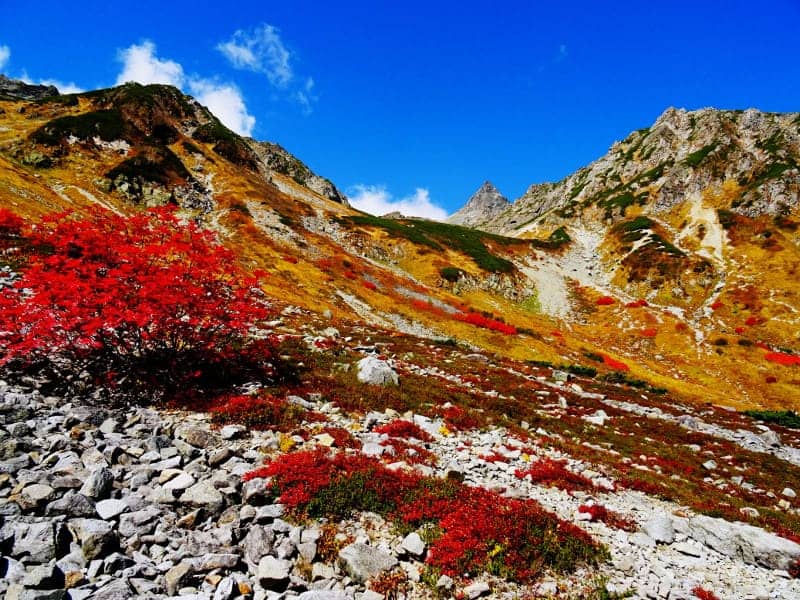
Hakusan National Park
Mount Hakusan, along with Tateyama and Mount Fuji, has been a spiritual destination for pilgrims for hundreds of years. The Senjo Path, a walkway used by ancient ascetics, remains and people can follow the footsteps of those seeking enlightenment even now. Head to the summit of Hakusan, Gozengamine Peak, to find Shirayama Hime Shrine, which is the head shrine of more than 3,000 Hakusan shrines across the country.
Chiburi Ridge is home to a Japanese beech forest, which is an old-growth (so-called primeval) forest that retains its natural beauty. Visitors with keen eyes will spot golden eagles, Japanese stoats, and Japanese serow here.
Activities: Mountain climbing, hiking,
More info: Hakusan National Park
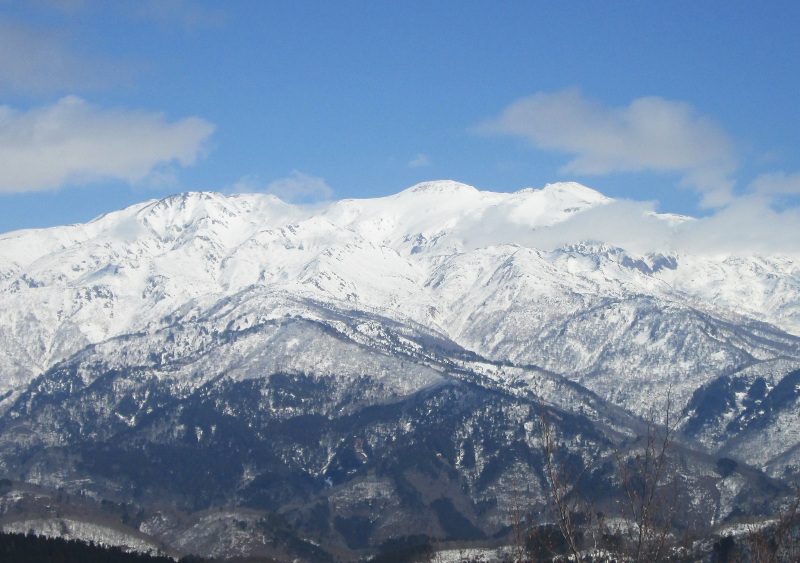
Ise-Shima National Park
Ise-Shima National Park is an interesting anomaly: 96% of the park consists of privately owned land and consequently has a large population living inside park perimeters. Because of this unorthodox situation, visitors can see how people and nature have interacted for centuries — the most telling is that of the region’s ama divers. The park spans across Ise, Toba, Shima, and Minami-Ise, and covers two areas: the inland area, which is where Ise Jingu is, and the coast area, with many inlets and small islands.
Apart from Ise Jingu, another popular spiritual spot is the Meoto Iwa (married couple) Rocks in Futami. It’s a great spot to catch the sunrise, which can be seen rising between the rocks between May to July.
Activities: Hiking, cycling, meeting ama divers
More info: Ise-Shima National Park
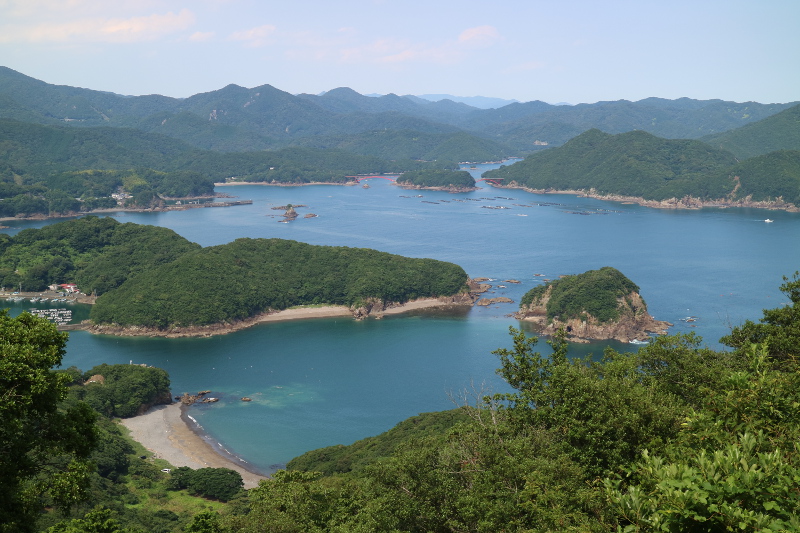
Kinki, Chugoku & Shikoku Regions
Yoshino-Kumano National Park
The home of the famous Kumano Kodo, a collection of spiritual pilgrimage paths to the Kumano Sanzan (Three Grand Shrines of Kumano). The paths date back to the 11th century, when aristocrats made their way here — by the 15th century, most pilgrims were commoners. Nachi Falls, located on the shrine grounds of Kumano Nachi Taisha, is Japan’s tallest waterfall at 133 meters high.
Yoshino-Kumano Park is also where you’ll find Japan’s most famous cherry blossom viewing spot. Mount Yoshino is covered in over 30,000 cherry trees, and it’s said that the first trees were planted here over 1,300 years ago.
Activities: Snorkeling, hiking, river rafting, onsen bathing, turtle watching
More info: Yoshino-Kumano National Park
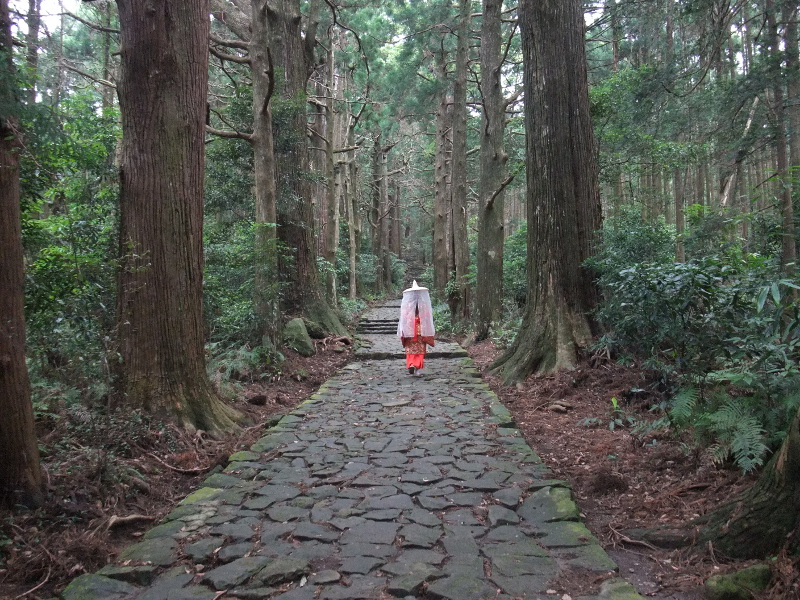
San’inkaigan National Park
Most famous for the Tottori Sand Dunes, San’inkaigan National Park stretches across 75 kilometers of coastline from Kyoto Prefecture to Tottori Prefecture. The coast has many sea cliffs and sea caves with distinctive features, making them unique sights of scenic beauty. The Hasakari-iwa Rocks natural structure is one of those spots, where a spherical rock is lodged between two spikey rocks, forming a sea cave.
Visitors can easily find a large variety of sea creatures without having to dive and there are several nature observation courses available to explore the area with the aid of an expert.
Activities: Paragliding, sandboarding, hiking, swimming
More info: San’inkaigan National Park
For more things to do in Tottori, read our feature, “7 Off-the-Beaten Path Experiences in Tottori Prefecture.”
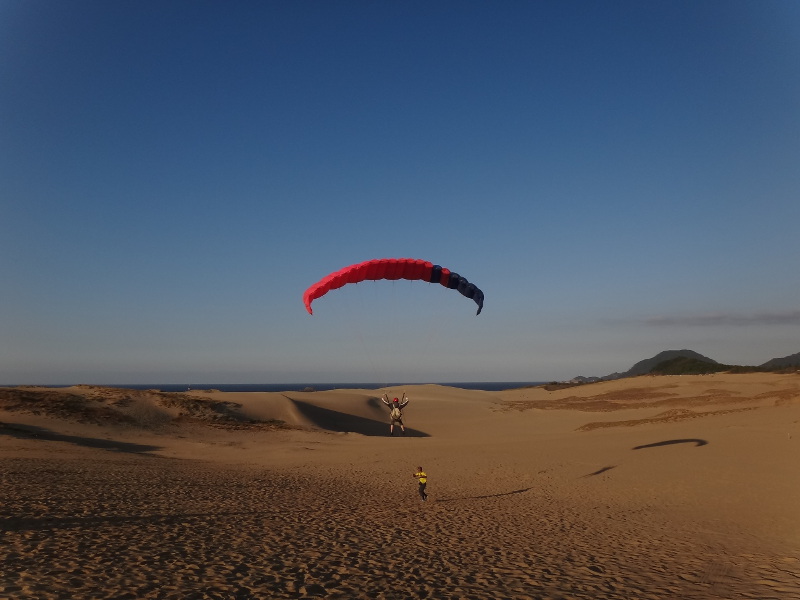
Setonaikai National Park
The largest of all the national parks, this beast spans over 11 prefectures and has a total area of 900,000 hectares (including the sea). Visitors to Tatsuno City in Hyogo Prefecture can experience a real treat in spring during a low tide. During this time, two of the three islands can be reached on foot, allowing people to cross over the sea. The Seto Inland Sea area is also home to a number of different sea creatures, including the Japanese horseshoe crab and the finless porpoise. The former is considered a living fossil, and has a museum dedicated to the species in Kasaoka City, Okayama Prefecture. The finless porpoise is so named because of its lack of dorsal fin and though a protected species, is vulnerable due to environmental degradation.
Activities: Swimming, hiking, glass boat rides, swimming,
More info: Setonaikai National Park
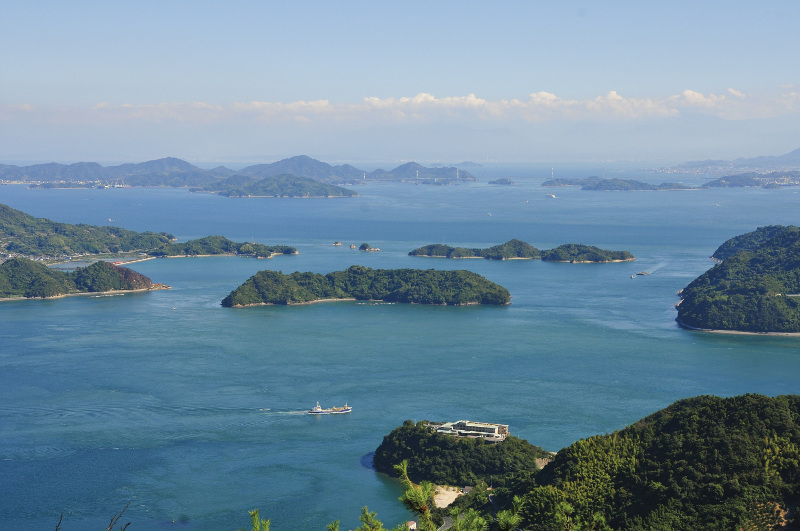
Daisen-Oki National Park
Divided into four main parts, Daisen-Oki National Park spans Okayama, Shimane, and Tottori prefectures, and is home to Izumo-Taisha, one of the most important shrines in Japan and the setting of many of Japan’s myths. Mount Daisen, the highest peak of the Chugoku region at 1,729m high, is reflective of this ancient past as it is littered with historic ruins, temples, and shrines. Head to the coast for cliffs of red basalt, which create a beautiful contrast to the deep blue ocean. Further out are the Oki Islands, a collection of 180 islands with complex coastlines and a deeply traditional culture that is very much alive today. The mainland park areas house the endangered Japanese giant salamander, a beast that can grow up to 1.5 meters and is basically a living fossil.
Activities: Sea kayaking, camping, hiking, cycling
More info: Daisen-Oki National Park
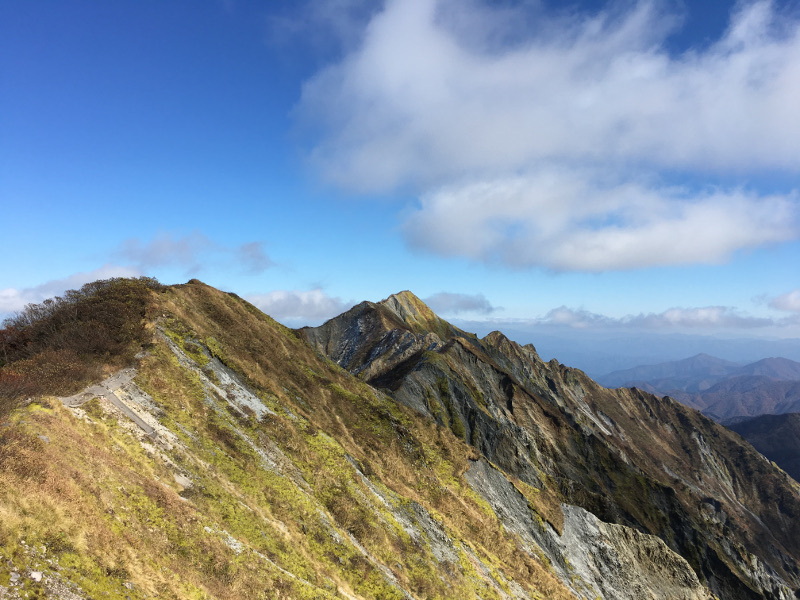
Ashizuri-Uwakai National Park
One of Ashizuri-Uwakai National Park’s highlights is the Shikoku walking trail, built to introduce visitors to the history and nature surrounding the ancient Shikoku Pilgrimage route. The trail winds past Kongofukuji Temple, one of the 88 temples along the pilgrimage.
Another highlight, perfect for snorkelers and divers, is the soft coral, which is a species of coral with a flexible skeleton, earning them the name of “flowerbeds of the sea” as they gently sway with the ocean currents. Back on land, unusual rock formations, like those of the Tojindaba Megalithic Ruins — stone circles with a view of Kyushu — and Tatsukushi Beach’s soft sandstone, are unique natural wonders that deserve a closer look.
Activities: Hiking, snorkeling, scuba diving, loggerhead turtle watching, sea kayaking
More info: Ashizuri-Uwakai National Park
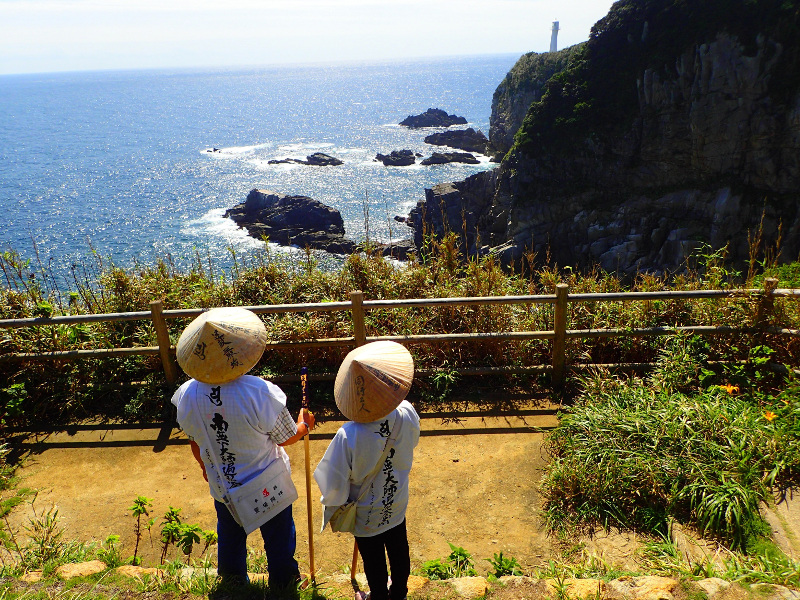
Kyushu & Okinawa Regions
Saikai National Park
For awe-inspiring archipelago views, look no further than Saikai National Park. Home to the stunning Kujukushima Islands (literally “99 islands” — kujuku means 99 in Japanese, and used to be a term indicating there was a lot of something, as opposed to the actual number), as well as Ikitsukijima and Hiradojima Islands, and the Goto Islands. The Goto Islands are famed for camellia oil and udon, which you can try at Yabu no Tsubaki in Tokyo. The Goto Islands retain much of their Hidden Christian heritage — Dozaki Church, one of the oldest churches in Nagasaki Prefecture, can be found here.
Activities: Scuba diving, hiking
More info: Saikai National Park
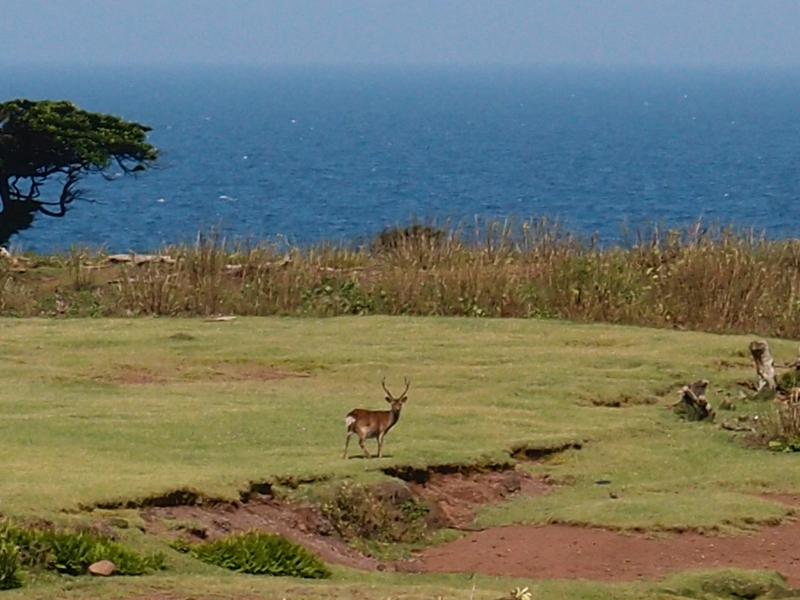
Unzen-Amakusa National Park
This extensive area spreads across Kyushu’s Nagasaki, Kumamoto and Kagoshima prefectures, and includes Unzen Onsen’s Unzen Jigoku (Unzen Hells), where hot spring water gushes out of the ground along with volcanic gas. While now it’s a popular hot spring resort, the area has been a holy site since ancient times, and during the 17th century, hidden Christians persecuted for their faith would be thrown into these boiling pools on the hillside. The Amakusa area consists of more than 120 islands and one of them, Goshonoura Island, is particularly special. Ammonites and dinosaur fossils have been found across the island as it is formed from a layer of rock that dates back to the Cretaceous Period. You’ll also find a rich variety of sea life here, including Indo-Pacific bottle-nosed dolphins, blue-and-white flycatchers, and other animals.
Activities: Dolphin watching, hiking, onsen bathing
More info: Unzen-Amakusa National Park
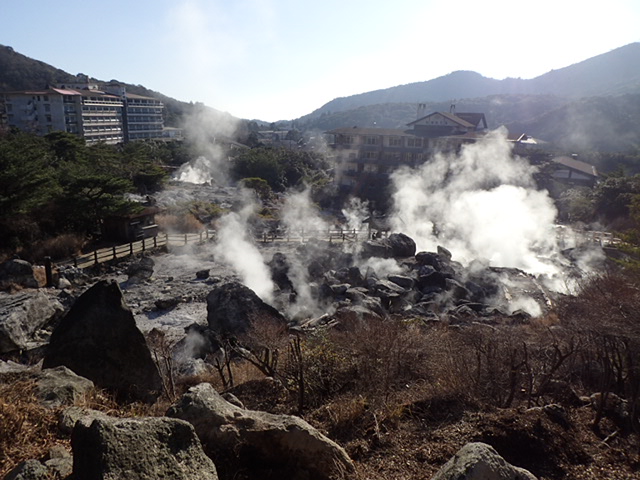
Aso-Kuju National Park
Boasting one of the largest inhabited calderas in the world, Mount Aso encompasses five peaks of active an inactive volcanos, often collectively known as the reclining Buddha. Visitors to the park can feel the powerful energy of an active volcano by walking up the mountain trail to Mount Nakadake’s crater. After the 2016 Kumamoto earthquake, some of the areas were closed for reparation, but as of March 2018, all areas have been restored and are in tip-top shape for visiting.
Activities: Onsen bathing, horseback riding, paragliding, camping, hiking
More info: Aso-Kuju National Park
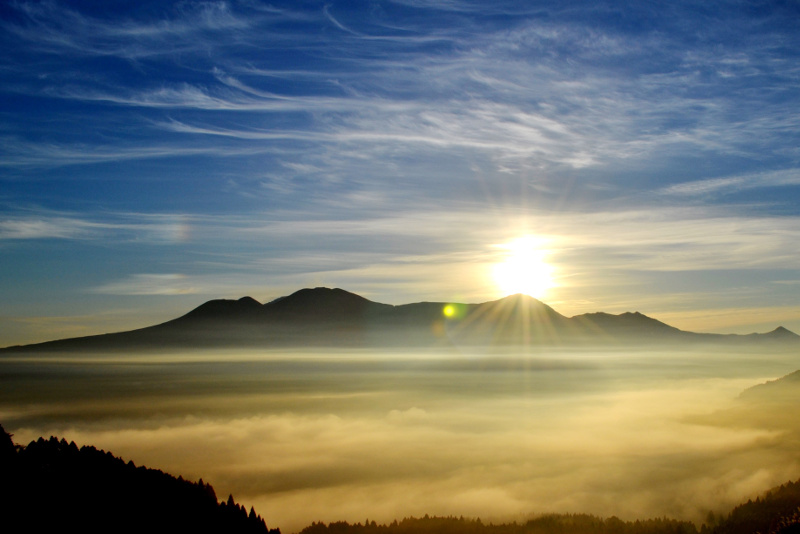
Kirishima-Kinkowan National Park
This extensive area has a lot of volcanic activity, with Sakurajima (in Kagoshima City) and Mount Shimoedake (Kirishima City) as two of the most famous volcanoes with frequent eruptions. The park also boasts the sacred mountain Takachiho-no-mine, which, in Japanese mythology, is where the Sun Goddess Amaterasu’s grandson Niningi no Mikoto descended to Earth. He, in turn, was a direct ancestor of Jimmu, Japan’s first emperor.
Chiringashima Island (pictured below) is located at the south end of Kagoshima Prefecture, just north of Ibusuki Onsen. Roughly 80 times a year, at low tide, a sandbar appears, allowing people to walk over to it.
Activities: Hiking, onsen bathing, swimming
More info: Kirishima-Kinkowan National Park
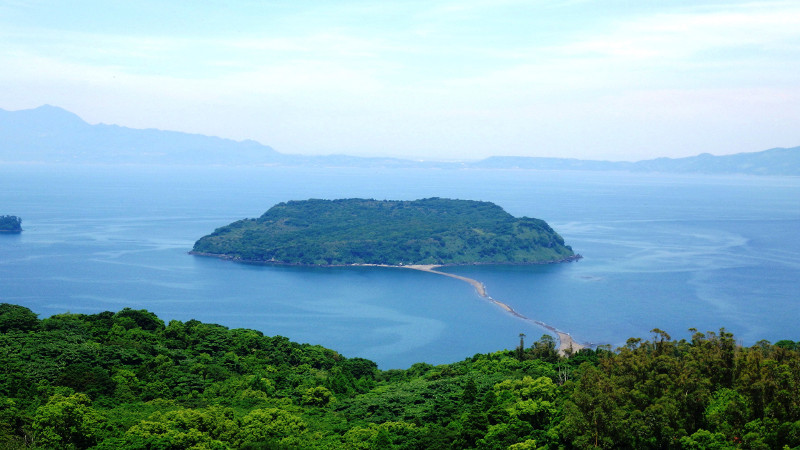
Yakushima (Island) National Park
Arguably one of the most famous islands in Japan, Yakushima Island is surprisingly small. Even so, it boasts 39 mountains, with the highest peak reaching 1,936 meters above sea level. Known mostly for its deep forests of Jomon sugi (cedar) trees — some of which are over 1,000 years old — Yakushima is also home to a diverse range of wildlife, including the endemic Yakushika deer and Yakushimazaru monkeys. A population of loggerhead turtles lays their eggs on Nagata Beach between May and July, which visitors can witness (from a safe distance). The park area also covers neighboring Kuchinoerabu-jima Island, a volcanic island with a completely different environment to Yakushima.
Activities: Village eco-tours, hiking, turtle watching
More info: Yakushima (Island) National Park
For more things to do in Kyushu, read our feature “Find Your Perfect Kyushu.”
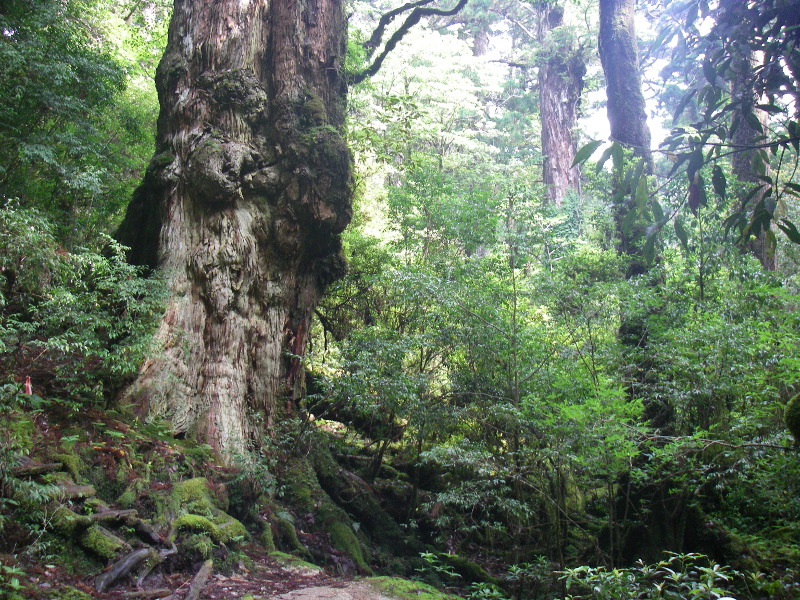
Amamigunto National Park
The most recent addition to Japan’s national parks, Amamigunto National Park was added to the list in 2017. This group of five islands was chosen for its diverse ecosystem, which includes about 120 subtropical plant species, as well its historical connection to the Ryukyu Kingdom and Satsuma Domain. The islands here have quite different landscapes, due to them forming during different prehistoric eras.
One of the many natural wonders here is the awe-inspiring Shoryudo Limestone cave on Okinoerabujima Island — it was discovered as late as 1963 and is 3,500 meters long. A 600-meter area of this is open to the public.
Activities: Snorkeling, swimming, canoeing
More info: Amamigunto National Park
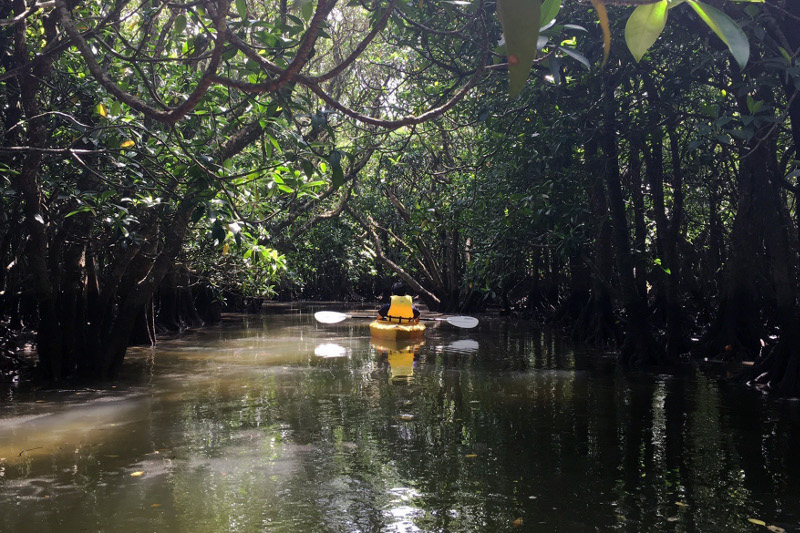
Yambaru National Park
Yambaru means “region of mountain ranges and rich forests” and refers to the northern part of Okinawa’s main island. About 80% of the area is covered in subtropical laurel forests, making it an excellent habitat for a number of different species. In fact, the combined areas of Kunigami, Ogimi, and Higashi Villages are home to about half of Japan’s bird species, as well as a quarter of the nation’s frog species. Endemic species that make this region their home include the Okinawa woodpecker, the Ryukyu long-haired rat, Ishikawa’s frog, and the Yanbaru long-armed scarab beetle. The park is also the site of the largest mangrove forest on Okinawa island, covering 10 hectares of the mouth of Gesashi River.
Activities: Canoeing, hiking, birdwatching tours, camping
More info: Yambaru National Park
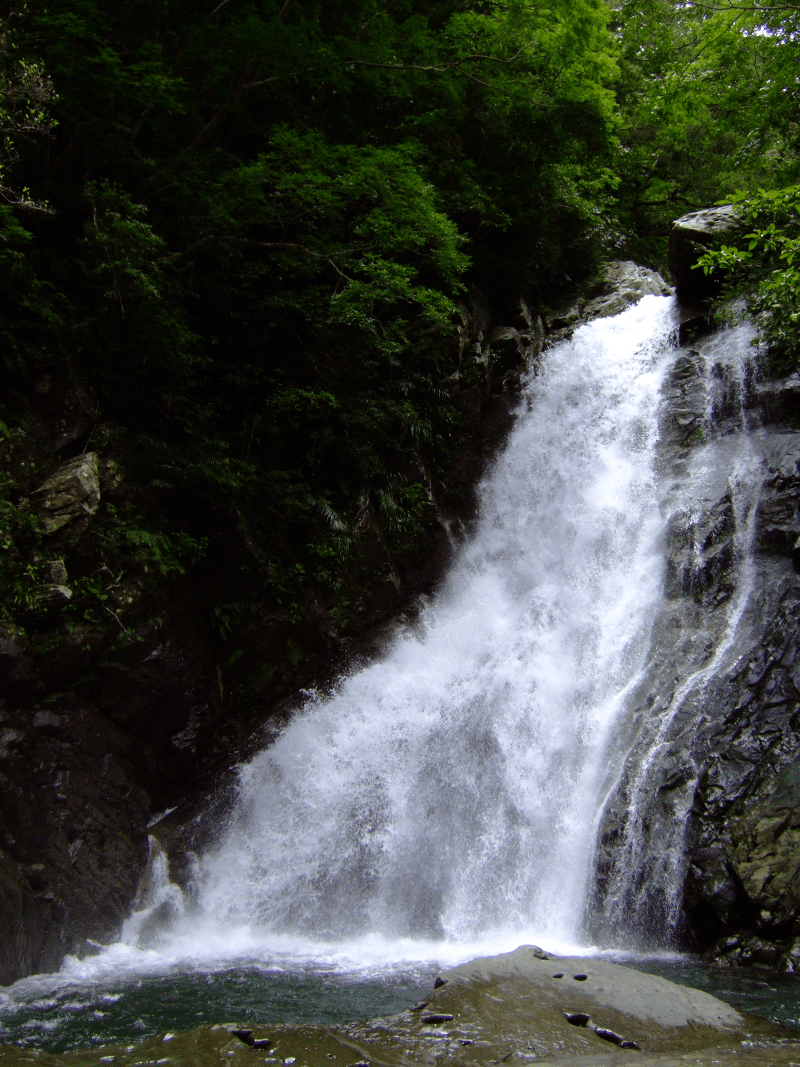
Keramashoto National Park
The Kerama Islands consist of more than 30 islets and many rock reefs. The islands boast stunning beaches and beautiful nature trails, but the true treasure is the surrounding ocean. Thanks to the rich variety of coral in the area, the park is an excellent habitat for tropical fish and marine wildlife, including damselfish, green turtles, and humpback whales. Visitors curious about coral should visit in June, during spawning season. Coral larvae are swept off to sea, making the Kerama Islands a vital source of new coral to Okinawa’s main island.
Activities: Snorkeling, scuba diving, whale watching, sea kayaking
More info: Keramashoto National Park
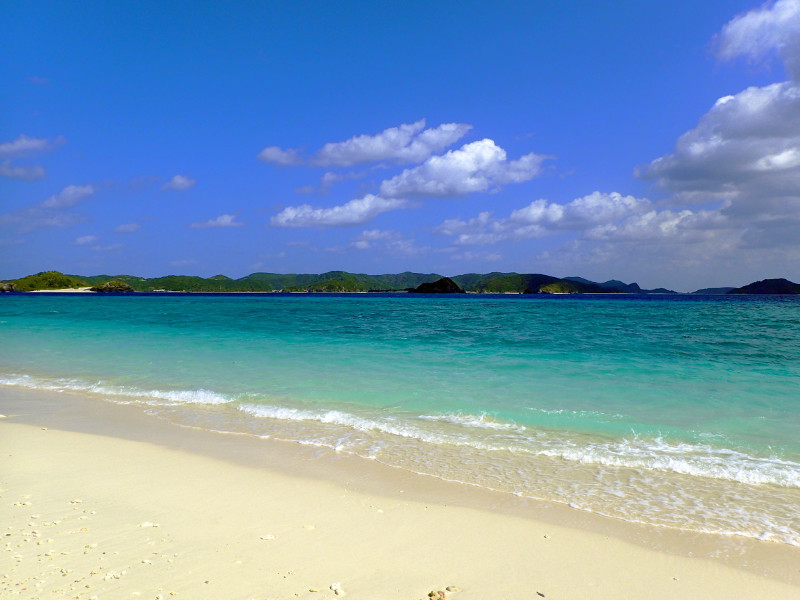
Iriomote-Ishigaki National Park
The southernmost national park in Japan is in Okinawa and is rich with coral reefs, subtropical forests, and mangrove forests. Sekisei Lagoon is one of the largest coral reefs in Japan and measures 20km across east to west and 15km across, north to south. Thanks to the vast coral reef network, visitors can spot manta rays, manta alfredi (reef manta ray), and hundreds of species of colorful fish in the area. Highlights on land include Hoshizuna-no-hama beach on Taketomi Island, where star-shaped sand grains made from coral can be found if you look closely. The island itself is made from raised coral and features many beautifully preserved traditional buildings.
Activities: Snorkeling, swimming, scuba diving, hiking
More info: Iriomote-Ishigaki National Park
Images courtesy of Ministry of the Environment Government of Japan

